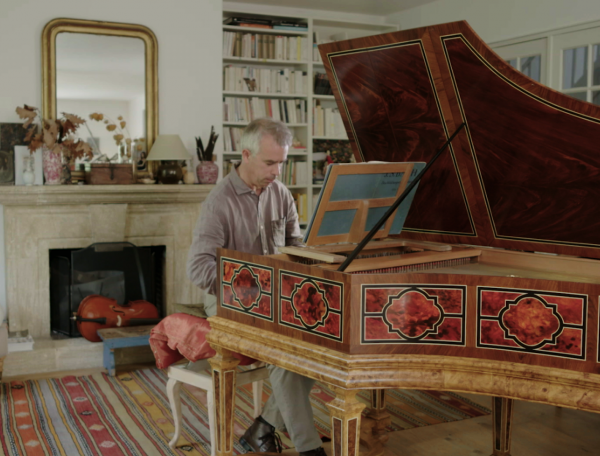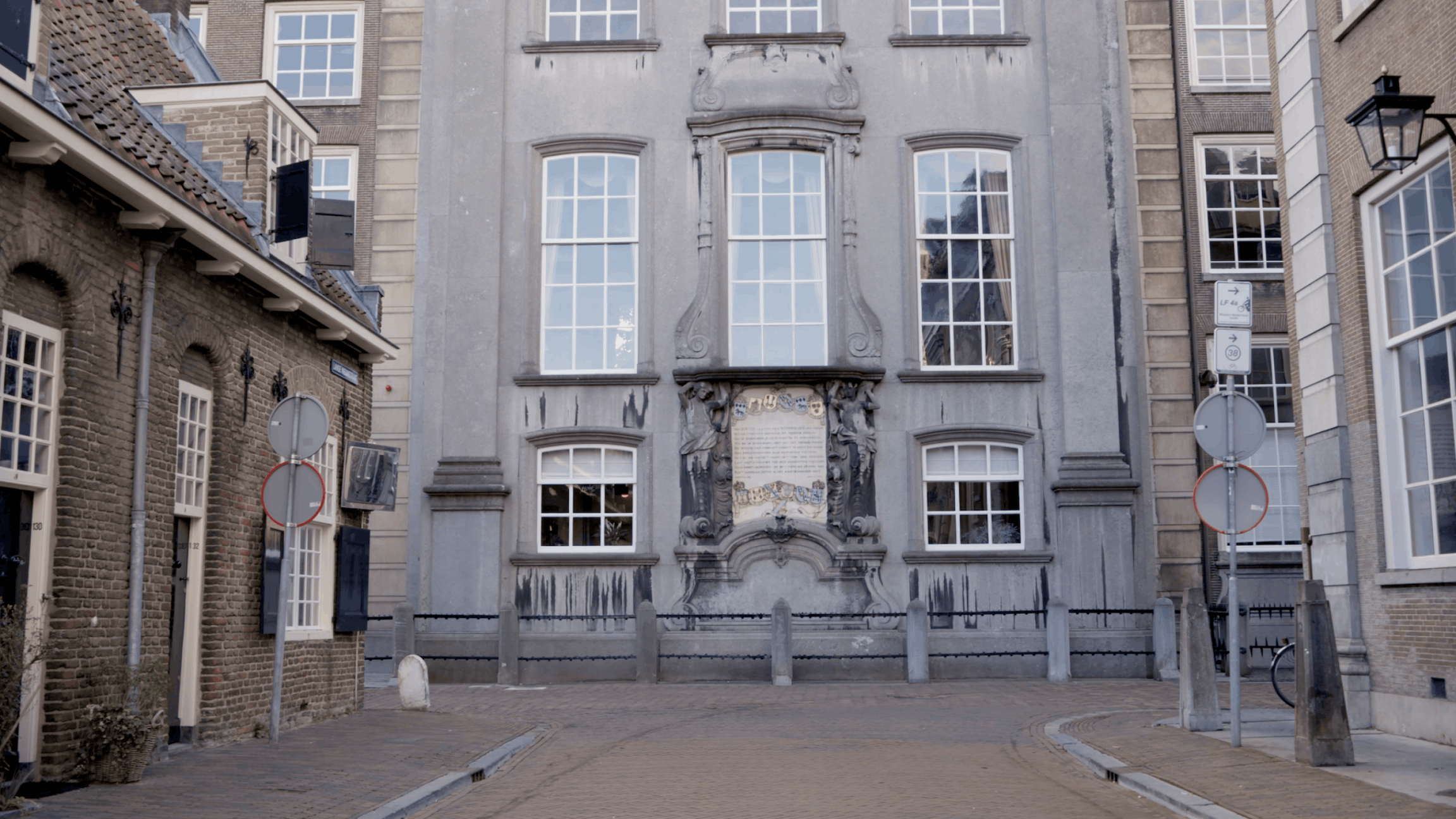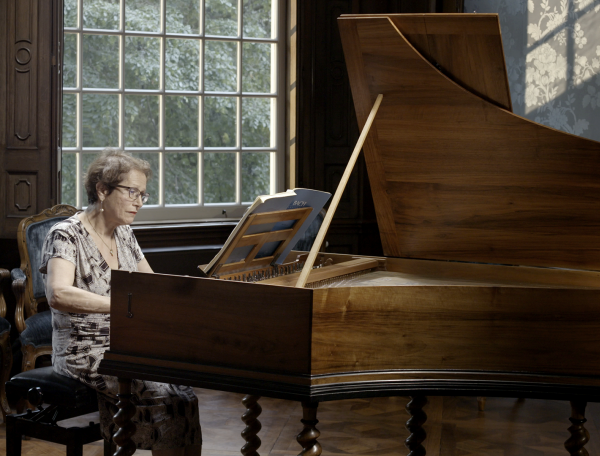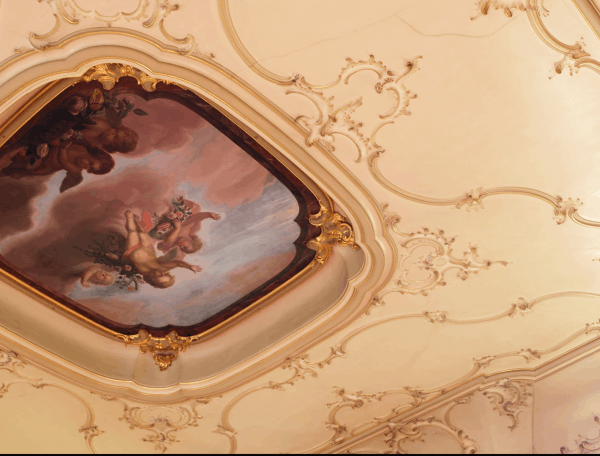

The Well-Tempered Clavier II no. 19 in A major
BWV 888 performed by Christine Schornsheim
Fundatie van Renswoude, Utrecht
Behind the music
Short but sweet
Bach doesn't need much to make his (counter)point
Together, the prelude and fugue might only last three minutes, but in that short space of time Bach writes as succinctly as possible. This may be due to the key: A major. Many works in this key prove to be textbook examples of what is known as imitative counterpoint. Counterpoint is a composition style in which several melody lines are heard together. The challenge is to make each part in the counterpart equal and worthy of attention. Little motifs jump from part to part, so that your attention keeps shifting. As befits the exceptional decor of the building Fundatie van Renswoude, Bach’s treatment of the motifs here is light-hearted.
In the prelude - which can easily be arranged for chamber trio - everything revolves around inversion. Not only does the elegantly winding theme continually change direction, but in the repetition the upper parts change places, so that the music sounds like new. When the movement seems to be approaching its ending, the ‘straight’ and the inverted versions of the theme proceed together once more towards the heavens.
In the fugue theme, some analysts detect the outlines of the Christmas chorale Allein Gott in de Höh’ sei Ehr. Using such a melody as the framework for counterpoint was a popular technique. But it could just be coincidence, as the naturally simple chorales can easily appear spontaneously. Of much greater interest is the way in which Bach first tinkers with rhythm, and later adds a ‘disruption’ in the form of chromaticism. A fun fact is that the theme begins with a quaver rest, so with a brief silence, although of course that only becomes noticeable when a second part gives rhythmic context. Every gesture drives the movement onwards, sometimes in order to fill in the gaps in the theme, and sometimes through a momentary intake of breath. The lack of clear sections draws attention to the overarching harmonic movements; rising with great leaps in the bass and descending with cleverly interlocking little motifs in the upper parts. The idea of spicing up the sound picture with chromatic semitones seems to have occurred to Bach only halfway through the composition process.
WTC II
We recorded Bach’s first book of Preludes and Fugues in all the keys at the homes of 24 different musicians. For this second part, performed in its entirety by Christine Schornsheim, we chose 12 very different locations in Utrecht, to celebrate the 900th anniversary of our home city.
Das Wohltemperirte Clavier, BWV 846-893
Composing 48 keyboard pieces in all 24 keys was the sort of challenge Bach enjoyed. In each of the two parts of the Wohltemperirte Clavier, he brought together the musical couple prelude and fugue 24 times; twelve in minor keys and twelve in major. In the preludes, he gave free rein to his imagination, and demonstrated mathematical tours de force in the fugues. In contrast to the iron discipline Bach had to apply to his church compositions, here he could abandon himself to intellectual Spielerei without worrying about deadlines.
The first part of the Wohltemperirte Clavier dates from 1722, although it contains some music that was written in the preceding five years. There is less clarity about the history of part two. Bach compiled this second manuscript only around 1740, although once again some of the preludes and fugues it contains date from a much earlier period. Bach described the target group for this collection of pieces as follows: ‘Zum Nutzen und Gebrauch der Lehr-begierigen Musicalischen Jugend, als auch dere in diesem studio schon habil seyenden besonderem ZeitVertreib’ (For both the education of the industrious musical youngster and the enjoyment of those well-versed in this material’).
- BWV
- 888
- Title
- Prelude and fugue in A major
- Epithet
- no. 19 from the Well-Tempered Clavier II
- Instrument
- harpsichord
- Genre
- harpsichord works
- Serie
- Das Wohltemperirte Clavier II
- Year
- 1741
- City
- Leipzig
Extra videos
Vocal texts
Original
Translation
Credits
-
- Release date
- 15 May 2023
-
- Recording date
- 25 September 2022
-
- Location
- Fundatie van Renswoude
-
- Harpsichordist
- Christine Schornsheim
-
- Harpsichord
- Bruce Kennedy, 1989 after Michael Mietke
-
- Director, camera and lights
- Gijs Besseling
-
- Music recording
- Guido Tichelman, Pim van der Lee
-
- Music edit and mix
- Guido Tichelman
-
- Camera, lights
- Danny Noordanus
-
- Data handling
- Marieke de Blaay
-
- Assistant music recording
- Marloes Biermans
-
- Producer
- Marieke de Blaay
Discover
Help us to complete All of Bach
There are still many recordings to be made before the whole of Bach’s oeuvre is online. And we can’t complete the task without the financial support of our patrons. Please help us to complete the musical heritage of Bach, by supporting us with a donation!

